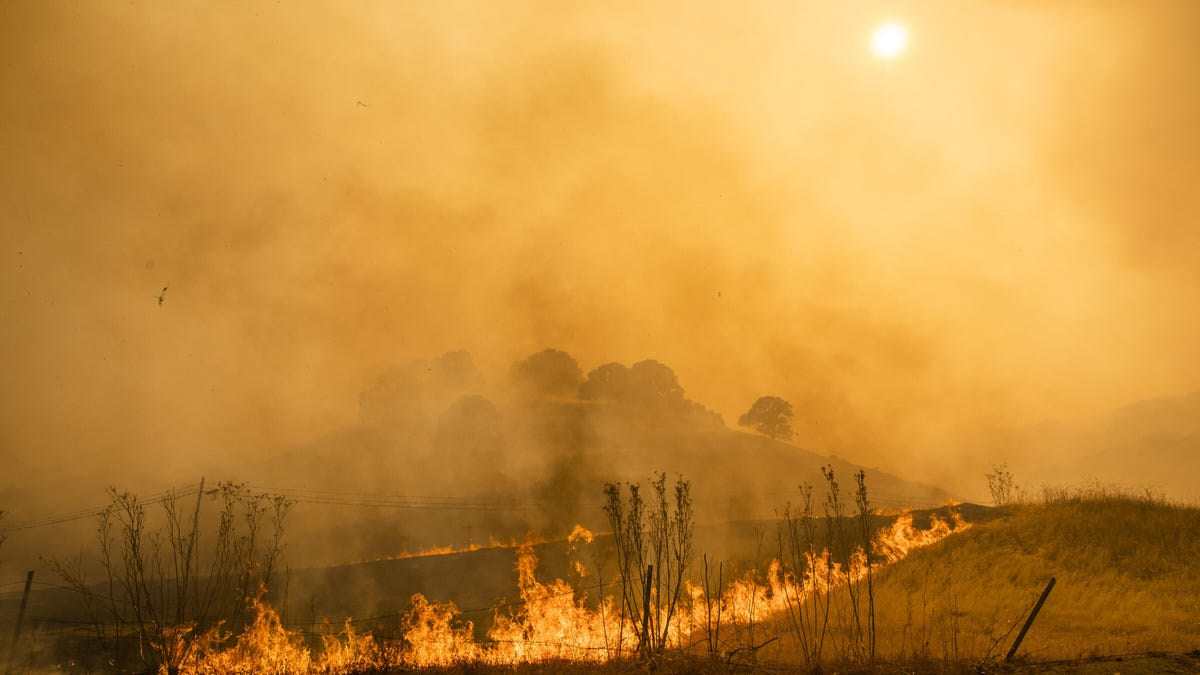What to know about this year's raging wildfires
The Dixie wildfire was the largest in the US in 2021.

It's wildfire season in the US.
More than 7.6 million acres burned in the US in 2021 due to wildfires. That's about 2.6 million fewer acres than 2020. California's Dixie fire was the largest wildfire of 2021; it burned more than 960,000 acres before being contained. Drought was a major driver, as large regions of the West dealt with severe drought, according to the US Drought Monitor. On Oct. 21, the National Interagency Fire Center reduced the preparedness level from 5 (the highest and most severe) to 1 (the least severe): "Minimal fire activity resulting in many available resources nationally."
Last year was a devastating year for wildfires in the US: 10.1 million acres burned. California was particularly hard hit, losing over 4.2 million acres to wildfires, setting state records. This year's wildfire season was predicted to break records again but thankfully fell short.
Drought is only part of the problem. Strong winds, high heat, low humidity and lightning also create conditions for wildfires to more easily start or spread. Others, like last year's 7,000-acre El Dorado gender-reveal party fire, were started by humans by accident. All of these factors, including how to manage wildfires once they start, are compounded by the climate crisis.
Wildfire season doesn't have an official start date. It begins with the first wildfire of the year and ends with the last. Historically, wildfires are most likely to happen between May and October. Lately that paradigm has shifted -- wildfires raged well into late 2020, burning a record-setting 735,125 acres in December.
We'll be regularly updating the section below with resources on how to protect yourself, your family and your home if you live in a wildfire-prone area, as well as how to be more aware if you travel to an area prone to wildfires:
- Natural disaster insurance: Protect your home: Homeowners insurance covers some damage caused by major events like floods and fires, but not necessarily everything. Learn about additional coverage you might need if you live in an area prone to natural disasters, including wildfires.
- Best air purifiers: CNET's Dave Priest details your options for improving indoor air quality if you're dealing with anything from allergies to nearby smoke from wildfires.
- Pet disaster prep: How to keep animals safe during a wildfire evacuation: There are a lot of natural-disaster resources out there, but there are special guidelines you need to follow if you have pets. Read tips from Cal Fire, FEMA and the American Red Cross on how to keep your pets safe before, during and after a wildfire evacuation.
- Wildfires, tornadoes, floods, intruders: 4 ways your phone can save you in an emergency: There are a lot of ways your phone can help you out in an emergency. Get details on how your Android phone or iPhone can provide important resources when you need them most, in a variety of scenarios.
- Emergency prep: 3 tips on recovering important documents after a natural disaster: Learn how to secure and recover IDs and other important documents to save yourself time and stress following a wildfire or other disaster.
- How to prepare your home for wildfire season: CNET's Kent German lives in a wildfire-prone area. Here he outlines the steps you need to take to get your home ready for wildfire season, including everything from how to store your propane tank to planting fire-resistant landscaping.
- 16 emergency apps for wildfires, earthquakes and other disasters: There are tons of apps out there with information and resources detailing what you should do before, during and after a natural disaster, including wildfires.
- Emergency go bag: What to pack if you need to leave home ASAP: This detailed guide walks you through what type of bag you'll need in the event of a natural disaster and what items to pack -- and why they're important to bring along.
There's a lot more to come to help guide your emergency planning and preparedness, so be on the lookout for new stories right here. In the meantime, keep an eye on InciWeb for current information on wildfires in the US.

